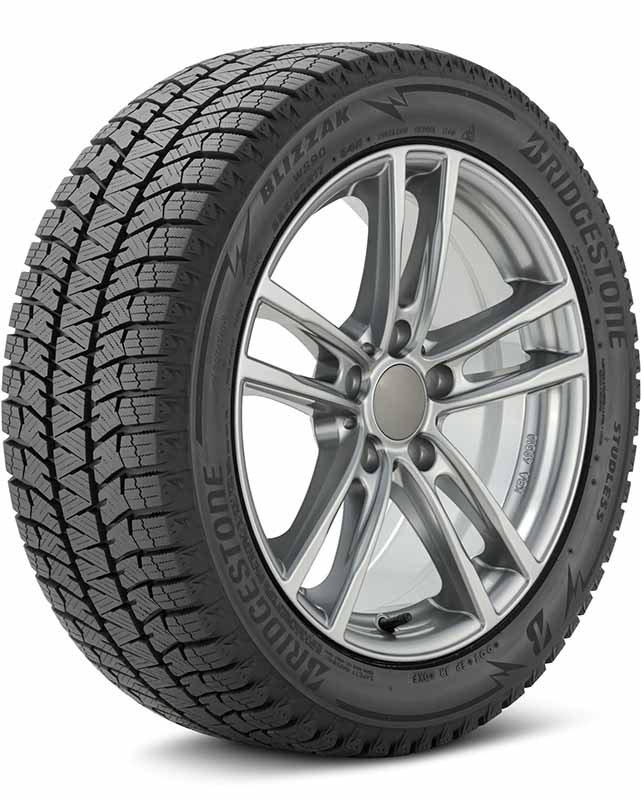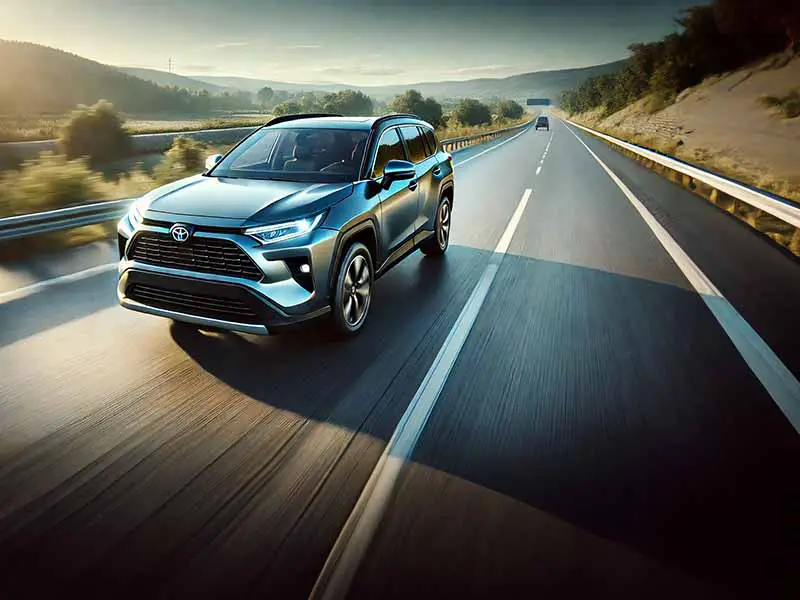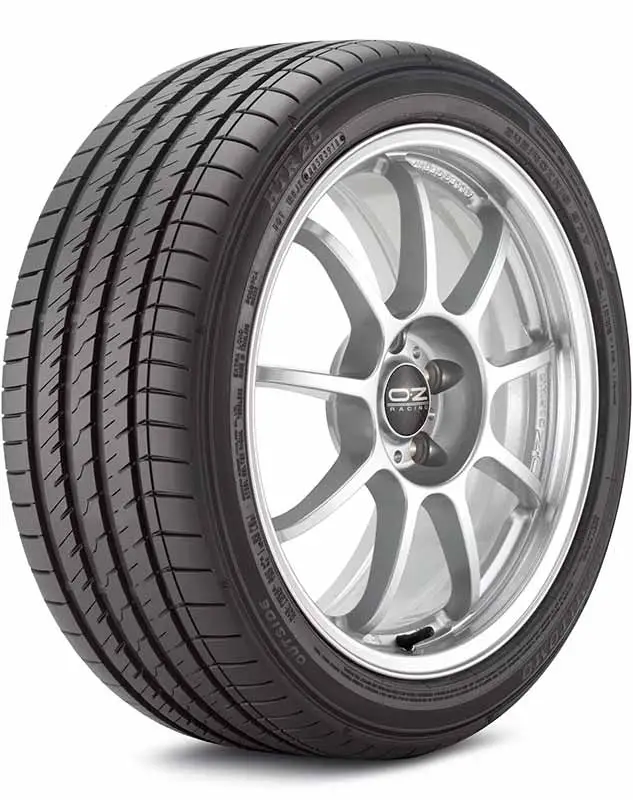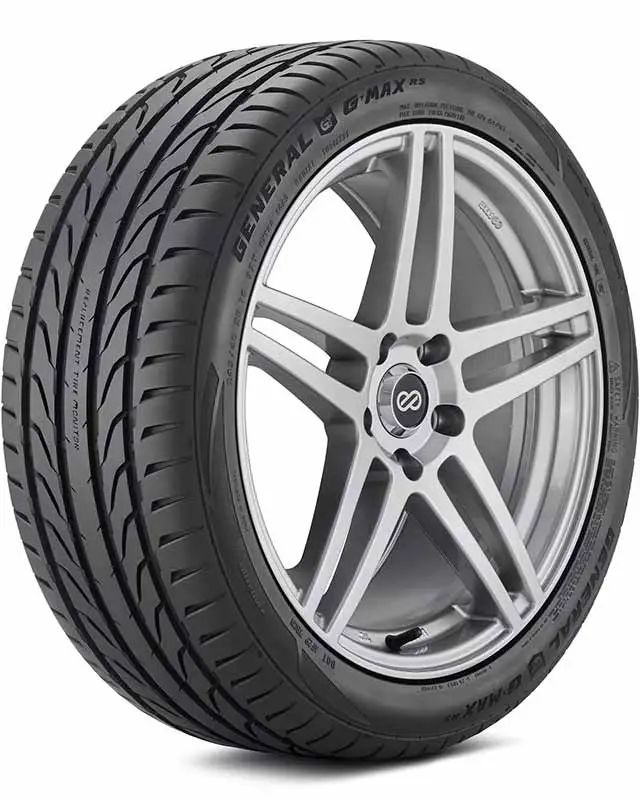Are you gearing up for the winter season and pondering over the right set of snow tires for your vehicle? You’re likely considering the Bridgestone Blizzak WS90, known for its impressive performance in snowy and icy conditions.
The Bridgestone Blizzak WS90 is a highly effective winter tire, offering exceptional grip and control in snow and ice, with good performance in wet and dry conditions.
In this article, we thoroughly review the Bridgestone Blizzak WS90, covering its performance in various conditions, its strengths, potential drawbacks, and how it stacks up against other winter tire options.
Bridgestone Blizzak WS90
Customer Rating
Overall Rating
8.8 of 10
Wet Weather
9.1 of 10
Winter Weather
9.2 of 10
Tread Wear
8.4 of 10
Dry Weather
8.8 of 10
Ride Comfort
8.5 of 10
UTQG
Uniform Tire Quality Grade
UTQG Treadwear Rating: N/A
UTQG Traction Rating: N/A
UTQG Temperature Rating: N/A
Mileage Warranty
None
Find The Best Price
Key Performance Metrics
Hydroplaning: 9.1 of 10
Wet Grip: 9.1 of 10
Cornering: 8.7 of 10
Dry Grip: 9.0 of 10
Responsiveness: 8.7 of 10
Mild Snow Grip: 9.6
Heavy Snow Grip: 9.3
Ice Grip: 8.9
Comfort Level: 8.9 of 10
Road Noise: 8.2 of 10
The Bridgestone Blizzak WS90 is a highly acclaimed studdless ice and snow winter tire, designed to deliver superior performance in harsh winter conditions. It stands out as a reliable choice for drivers seeking safety and stability during the cold months.
The Blizzak WS90 is a winter tire that features 15% more block edges than its predecessor, the WS80, providing shorter stopping distances on ice. It has a new tread compound with a larger contact area, enhancing control on snow and ice.
The tire is also designed with 30% more block stiffness in the tread pattern, contributing to an extra season of wear. Additionally, it incorporates Bridgestone’s patented MultiCell™ technology, which significantly enhances grip and helps prevent slippage on icy surfaces.
- Exceptional Winter Performance: The Blizzak WS90 boasts a remarkable rating in winter and snow conditions. With a 9.6 score in light snow traction and a 9.3 in deep snow traction, it ensures confident handling in various snowy environments. The tire’s 8.9 ice traction rating also highlights its capability to maintain grip on icy surfaces, making it a trustworthy companion for winter driving.
- Enhanced Wet and Dry Handling: With a wet rating of 9.1, including both hydroplaning resistance and wet traction, the WS90 excels in handling slushy and wet roads. It provides a reassuring grip and stability, reducing the risks of hydroplaning. In dry conditions, it scores 8.8 overall, with commendable corner stability, dry traction, and steering response. This balance ensures that the tire performs reliably not just in snow, but also in less severe winter conditions.
- Comfort and Noise Level: The Blizzak WS90 is designed with comfort in mind, scoring an 8.5 in this category. It offers a smooth ride quality (8.9) and manages to keep road noise at a reasonable level (8.2), ensuring a pleasant driving experience even on long winter journeys.
- Durability and Tread Life: With a treadwear rating of 8.4, the Blizzak WS90 is built to last. It offers a solid balance between durability and performance, ensuring that drivers can rely on the tire for multiple winter seasons. The tire’s construction and tread design contribute to even wear, which prolongs its usable life.
- Advanced Winter Technology: The WS90 incorporates Bridgestone’s cutting-edge winter tire technology, including a unique tread pattern and compound that enhance grip and stability in cold temperatures. This technology allows the tire to maintain flexibility in low temperatures, ensuring optimal performance.
The Bridgestone Blizzak WS90 is an exceptional winter tire that provides a safe and reliable driving experience in various winter conditions. Its excellent performance in snow and ice, combined with good wet and dry handling, makes it a top choice for drivers facing challenging winter climates. The added benefits of comfort and durability further establish the WS90 as a leading tire in its category.
Pros
- Superior Winter Safety: Excellent traction and handling in snow and ice, making it a top choice for winter safety.
- Balanced Wet and Dry Performance: Good capabilities in both wet and dry conditions, providing versatility for various winter scenarios.
- Comfortable Ride: Ensures a smooth and relatively quiet ride, enhancing driver and passenger comfort.
- Durable Design: Robust construction and long-lasting tread life, offering good value over time.
- Advanced Winter Technology: Incorporates Bridgestone’s latest innovations for winter driving, ensuring optimal performance in cold temperatures.
Cons
- Limited Ice Performance Compared to Studded Tires: While excellent for a studdless tire, it may not match the ice traction of studded alternatives.
- Moderate Road Noise: Although reasonably quiet, some drivers might find the noise level noticeable compared to non-winter tires.
- Performance in Non-Winter Conditions: As a specialized winter tire, its performance in warmer conditions is not optimal compared to all-season tires.
- Cost: Can be more expensive than some competitors, reflecting its advanced technology and performance features.
- Seasonal Tire Change: Requires changing to non-winter tires in warmer seasons, adding to maintenance considerations.
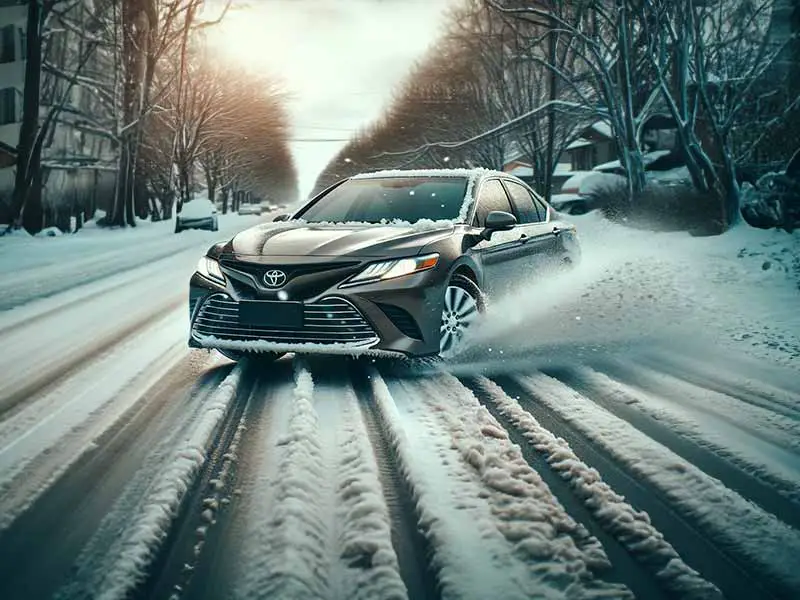
Bridgestone Blizzak WS90 Problems
The Bridgestone Blizzak WS90 winter tire is widely appreciated for its excellent performance in snowy and icy conditions, but like any product, it does have some areas that could be improved upon based on customer feedback and expert reviews.
- Snow Traction: While the Blizzak WS90 performs well in snow, its tightly packed, less aggressive tread pattern may not catch as much snow, resulting in slightly lower snow collection efficiency compared to some top-performing tires like the Michelin X Ice Snow. This factor slightly reduces the tire’s efficiency in snow traction, although it remains highly effective in this area.
- Noise Levels: Some users have noted that the WS90 can be louder compared to its predecessor, the WS80, particularly in dry conditions. This increased noise level might be noticeable, especially in luxury vehicle applications where cabin quietness is a priority.
- Performance on Black Ice: While the Blizzak WS90 provides good traction on ice, it has been noted that their performance on black ice is not as strong as in other conditions. They still offer safety, but the stopping distance and control might not be as effective as expected on extremely slippery surfaces like black ice.
- Dry Handling: The WS90 excels in dry longitudinal grip due to its continuous central rib maintaining consistent contact with the road. This leads to reduced braking distances and quicker acceleration times in tests. However, some reviews suggest that in terms of overall lateral traction and steering feedback, there might be room for improvement.
- Cost and Availability: The WS90 is available in a wide range of sizes, catering to different vehicles, but the cost can vary significantly depending on the size, ranging approximately from $80 to $230. While they offer great value for their performance, the price point can be a consideration for some buyers.
Despite these problem areas, the Bridgestone Blizzak WS90 is still highly recommended for winter driving, particularly in snowy and icy conditions. Its strengths in providing excellent traction and safety in winter conditions make it a popular choice. However, potential buyers should consider these factors, especially noise levels and ride quality, to ensure the tire meets their specific needs and driving conditions.
Bridgestone Blizzak WS90 Alternatives
When considering alternatives to the Bridgestone Blizzak WS90 for winter driving, it’s useful to compare them across various parameters such as wet and dry performance, winter/snow capabilities, comfort, and treadwear. Here are some top alternatives:
Michelin X-Ice Snow
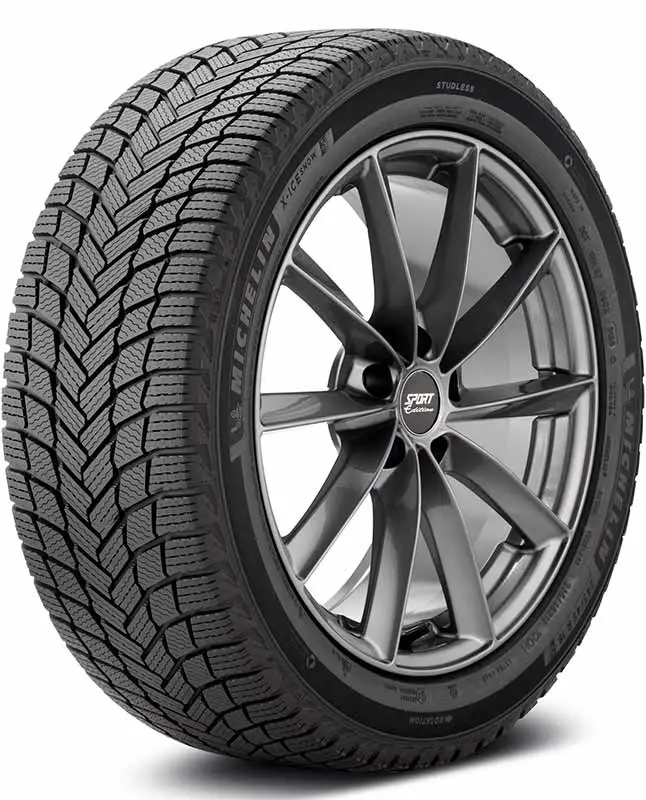
- Overall Rating: 8.9 out of 10.
- Performance Highlights:
- Wet Performance: Good hydroplaning resistance (8.7) and wet traction (8.8).
- Dry Performance: Offers solid corner stability (8.5) and dry traction (8.8).
- Winter/Snow: Strong performance in light snow traction (9.3) and ice traction (8.7).
- Comfort: High ride quality (9.0) and better noise reduction (8.6) compared to WS90.
- Treadwear: Slightly better at 8.8.
- Michelin X-Ice Snow Review: A strong contender, particularly for drivers prioritizing comfort and wet performance.
Continental VikingContact 7

- Overall Rating: 8.7 out of 10.
- Performance Highlights:
- Wet Performance: Comparable hydroplaning resistance (8.7) and wet traction (8.7).
- Dry Performance: Adequate corner stability (8.6) and dry traction (8.8).
- Winter/Snow: Good in light snow (9.2), though slightly lower in ice traction (8.4).
- Comfort: Excels with the highest ride quality (9.1) and noise level (8.7).
- Treadwear: Similar performance with a rating of 8.5.
- Continental VikingContact 7 Review: Ideal for drivers who value comfort and light snow traction.
Goodyear WinterCommand Ultra
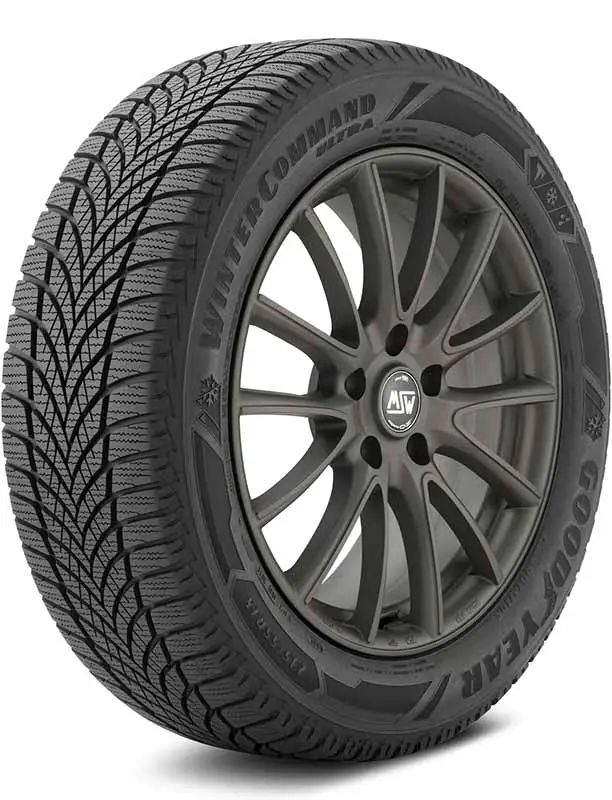
- Overall Rating: 8.8 out of 10.
- Performance Highlights:
- Wet Performance: Very good hydroplaning resistance (8.9) and wet traction (8.9).
- Dry Performance: Consistent corner stability (8.7) and dry traction (8.6).
- Winter/Snow: Comparable performance in light snow (9.3) and ice traction (8.7).
- Comfort: Similar ride quality (8.7) but slightly higher noise level (8.3).
- Treadwear: Matches WS90 with a rating of 8.4.
- Goodyear WinterCommand Ultra Review: A great alternative for balanced wet and snow performance.
Each of these tires offers unique advantages in handling, comfort, and performance under various winter conditions. They serve as formidable competitors in the winter tire category, providing options for drivers with different priorities and driving conditions.
Difference Between Winter Tires And All-Season
Winter tires and all-season tires are designed for different driving conditions, and understanding their key differences is crucial for safe driving throughout the year.
Tread Rubber Composition:
- Winter Tires: Made with a rubber compound that stays flexible at lower temperatures, ensuring better grip and braking on cold, icy, or snowy roads.
- All-Season Tires: Have a harder rubber compound that is less effective in cold weather but provides a good balance for mild weather conditions.
Tread Depth and Patterns:
- Winter Tires: Feature deeper tread depths and unique tread patterns designed to channel snow and slush and reduce the buildup of snow.
- All-Season Tires: Have moderate tread depths, suitable for a variety of conditions but not optimized for heavy snow or ice.
Biting Edges and Sipes:
- Winter Tires: Contain numerous sipes (small slits in the tread) that provide extra biting edges to grip icy surfaces.
- All-Season Tires: Have fewer sipes, making them less capable on ice and deep snow.
Performance in Different Temperatures:
- Winter Tires: Specifically engineered to perform well in temperatures below 45°F (7°C).
- All-Season Tires: Perform adequately in moderate temperatures but start to lose traction as the temperature drops.
When to Switch Between Tires
The decision to switch between all-season and winter tires depends largely on the climate and weather conditions in your area.
- Use All-Season Tires: If you live in a region with mild winters, where temperatures rarely fall below 45°F (7°C) and snowfall is minimal or non-existent. All-season tires provide a good balance of wet and dry traction for such conditions.
- Switch to Winter Tires: When you live in an area with harsh winter conditions – temperatures regularly dropping below 45°F (7°C), and frequent snow and ice. Winter tires are essential for safety in these conditions, typically from late fall to early spring.
- Timing: The general rule is to switch to winter tires when temperatures consistently start to drop below 45°F (7°C). This often happens in the late fall, and the tires should remain on the vehicle until temperatures consistently rise above this point in the spring.
Using winter tires in cold conditions and all-season tires in moderate climates ensures optimal traction, handling, and safety, adapting to the seasonal changes in driving conditions. It’s important to remember that winter tires wear faster in warmer conditions, so switching back to all-season tires when the weather warms up is also crucial for tire longevity.
Resources
Below are some links you may find helpful when learning about tires:
- Winter tire safety tips – National Highway Traffic Safety Administration
- How to choose the right tire for your vehicle – Consumer Reports
Final Thoughts
The Bridgestone Blizzak WS90 stands out as a top choice for winter tires, thanks to its superior handling and traction in snowy and icy conditions. Its performance in wet and dry conditions is also commendable, making it a versatile option for varied winter scenarios.
However, like any tire, it has its limitations, particularly in terms of noise levels and ride quality on dry roads. When choosing winter tires, it’s essential to consider your specific driving needs and conditions.
If you frequently encounter severe winter weather, the WS90 is undoubtedly a reliable and safe choice. For milder winter conditions, all-season tires might be beneficial.
Good luck and happy motoring.
